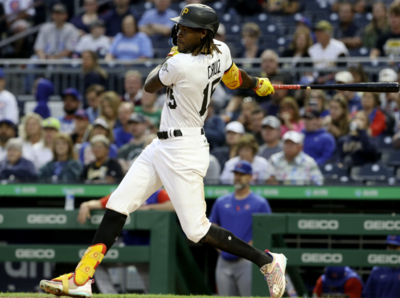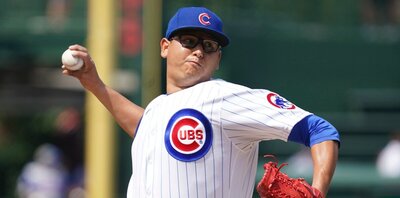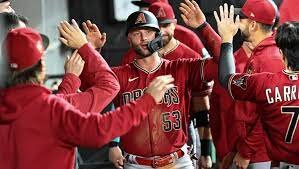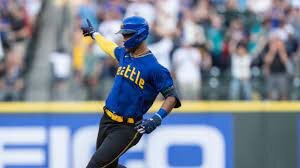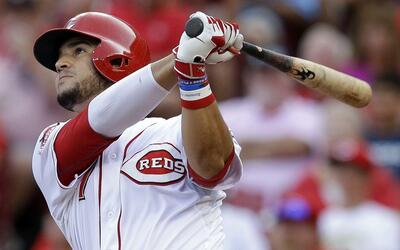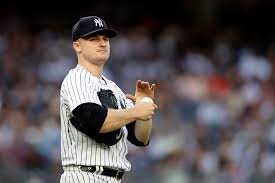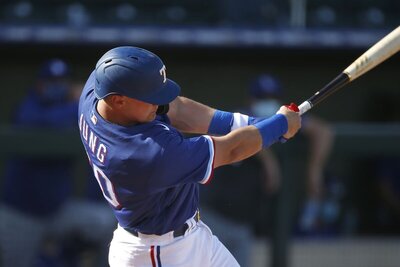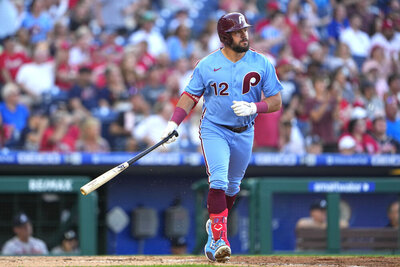Yoenis Cespedes (OF - OAK): A few weeks back I called Cespedes a strong buy-low candidate as an OF who was seeing his value hurt by a low LD Rate that was causing a low BABIP. Cespedes is still suffering from the low LD Rate (13.9%) and subsequent low BABIP (.252), but he's making up for it with a big power surge. Cespedes homered twice more on Thursday and now has 4 HR's in his last 3 games, while driving his ISO up to .266. Cespedes HR/FB Rate is in-line with his rookie year but the tradeoff in LD's for FB's is actually creating a significantly higher FB Rate for Cespedes and thus the jump in power. Eventually I think the batted ball distribution evens out a bit more and we see Cespedes LD Rate rise along with the batting average, but the take-away here is that Cespedes will hold his value as long as those LD's are coming at the expense of fly balls.
Victor Martinez (DH - DET): Martinez homered for the 2nd time in June which just 6 days into the month equals the HR total he had in the entire first two months of the season. Martinez has shown some deterioration in his contact rates (89.3%, 2010-2011: 92%) and in his power (.097 ISO, 2011 - .141), but he's also suffered from some really bad luck on balls in play. Martinez has posted a solid 19.7% LD Rate but earned just a .246 BABIP. As a result the .231 average should rise over the course of the season and trend towards .280. The problem for Martinez is a .280 hitter with limited power (maybe double digit HR's), no speed, and below average run production can hold up as a catcher but does nothing for you as a Utility player. Martinez's entire value going forward is essentially tied up in whether your league values him as a Catcher or a Utility player. If he's a catcher and you're in a two catcher league he's a fine hold or buy low, but without catcher eligibility he's only relevant in deep leagues.
Jimmy Paredes (OF - HOU): Paredes had an ugly day at the plate on Thursday as he went 0-4 with 4 strikeouts and dropped his season line to .208/.262/.299. Paredes has some deep league appeal because of his wheels. He stole 39 bases last year across AAA and the majors and stole 34 the year before at AA and the majors. Unfortunately for Paredes the old cliché "you can't steal first" is getting in the way of success at the major league level. He's now striking out in over 31% of his PA's and a horrid 73% contact rate suggests it's not a fluke. Paredes contact rate in the strike zone (81.5%) isn't bad but he's chasing 45% of pitches outside the strike zone and major league pitchers refuse to throw him strikes. If Paredes can improve his plate patience his 15% K% at AAA suggests he could make enough contact to give his legs an opportunity to earn fantasy value. At the current pace, however, he's putting his major league playing time at risk.
JJ Hardy (SS - BAL): Thursday was a nice day for a little bit of BABIP regression for Hardy. As Thomas noted over the weekend Hardy has shown improvements in his contact rates this year (88.6%, career 85.4%) that have led to a decreased strikeout rate (11.3% K%) but it hadn't yet translated into the batting average department because of a low BABIP. Hardy went 4-4 on Thursday and the BABIP rose from .238 to .254, while also raising his average to .266 on the season. Hardy's career BABIP is closer to .273 which might suggest his batting average deserves to be closer to .275 on the season. Hardy's HR pace will probably slow as his current 16.3% HR/FB Rate is a bit above his 11.6% career average, but with batting average no longer a drag on his value, Hardy is a plus two category producer who doesn't hurt you anywhere else. With all the injuries at the SS position this year he looks like a lock to finish the season in the Top 10 at the position.
Jose Quintana (SP - CHW): Quintana experienced a bit of regression in his HR/FB Rate on Thursday as the A's connected for three home-runs off the LH starter in his 7 2/3 innings of work. Quintana had his usual strong command (0 BB's) and as is typical was heavily reliant on contact (2 K's), but the difference between this start and the rest of 2013 was that balls were leaving the yard. Quintana has seen an abrupt change in his batted ball distribution this season as his GB Rate has dropped from 47% to 39%. Early in the season with the cooler weather in Chicago Quintana wasn't being punished for this transition as he benefited from a lower HR/FB Rate than his career average and the league average. The good fortune allowed him to masquerade as a mid-rotation starter when his ceiling is really that of a back-end major league starter and deep league fantasy option. As the weather warms and the ball flies, Quintana's ERA will chase his current 4.41 xFIP.
Follow us on Twitter all year: @Fantistics and @drewdinkmeyer



